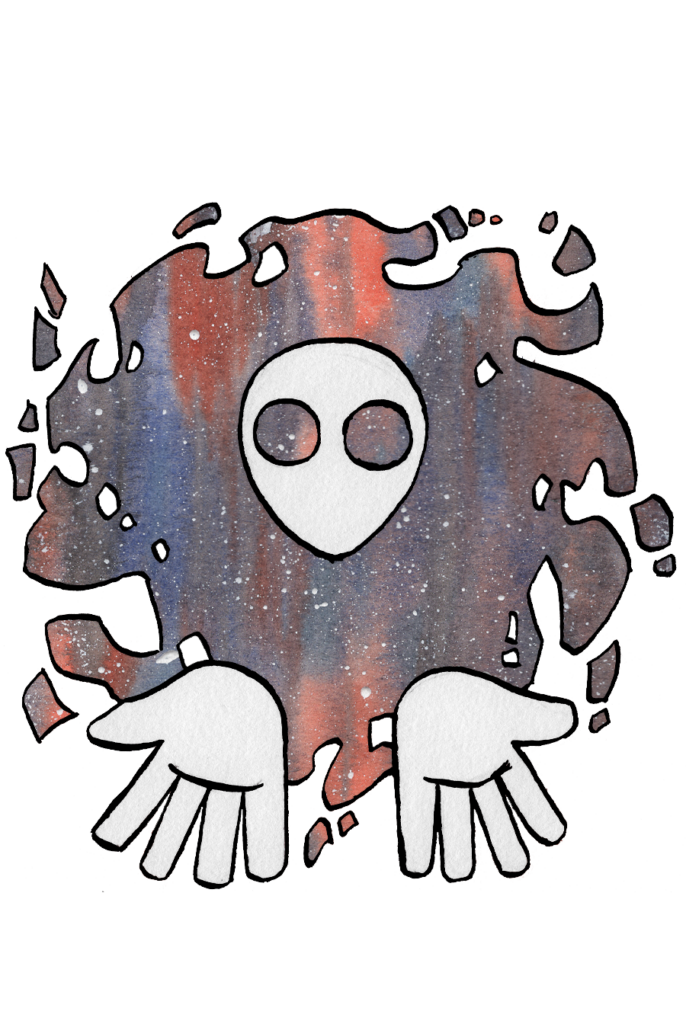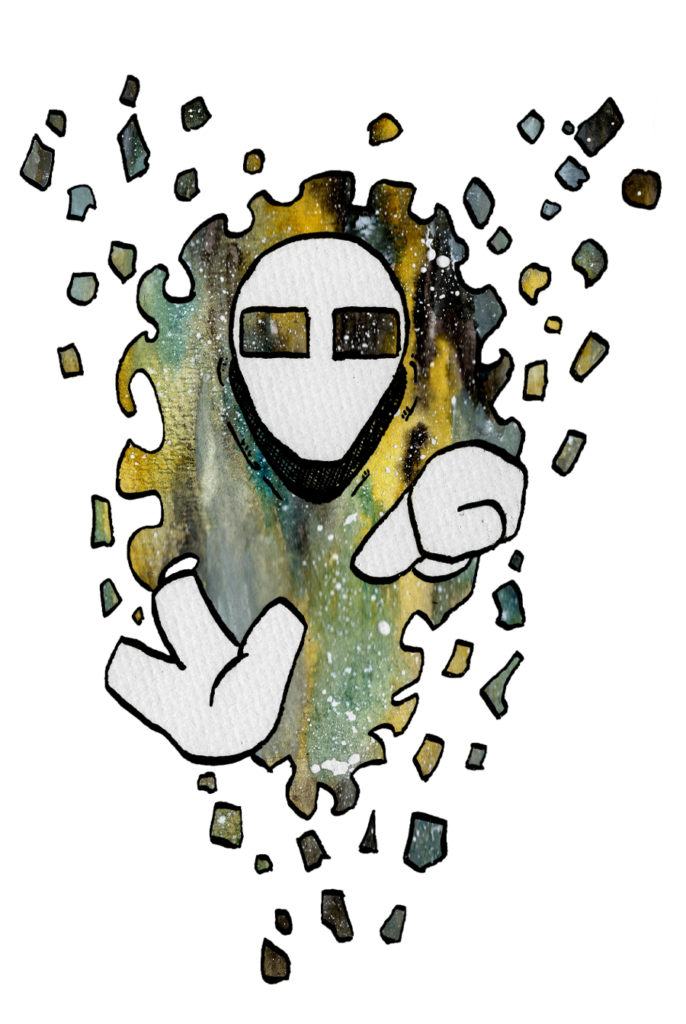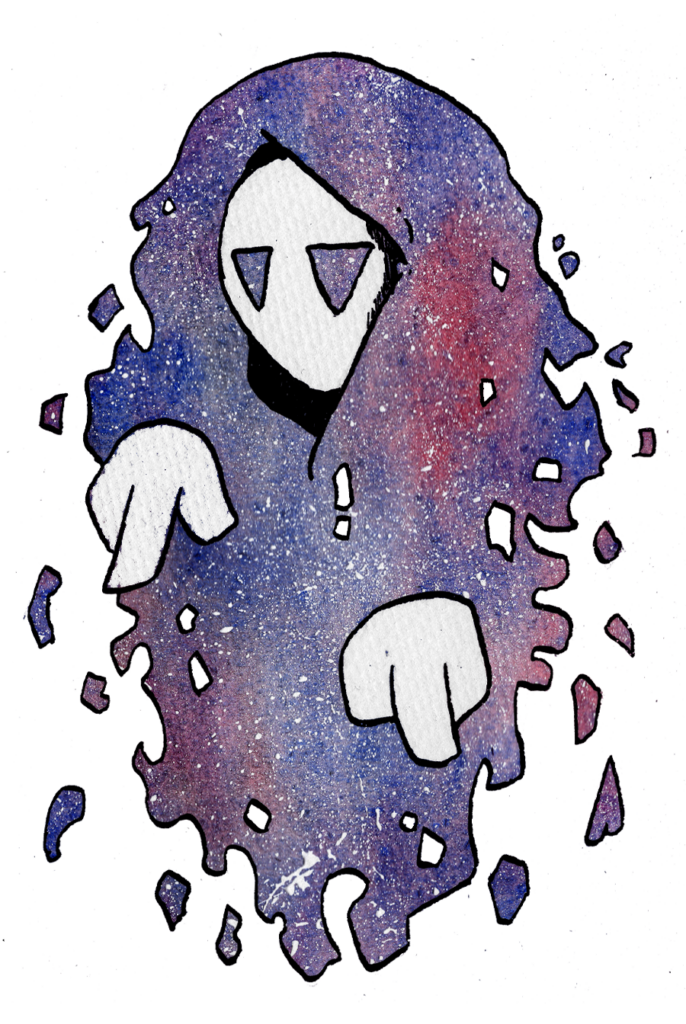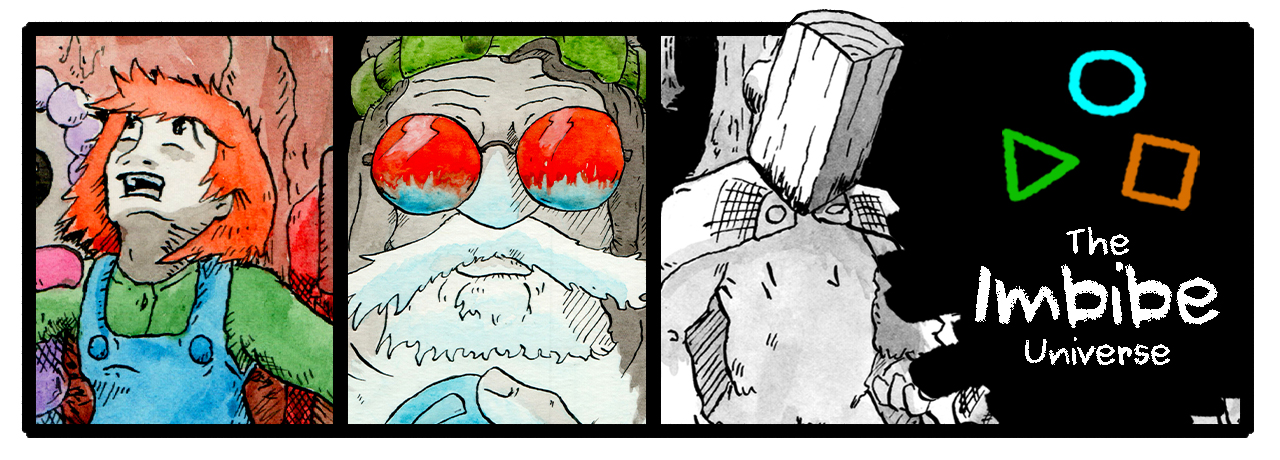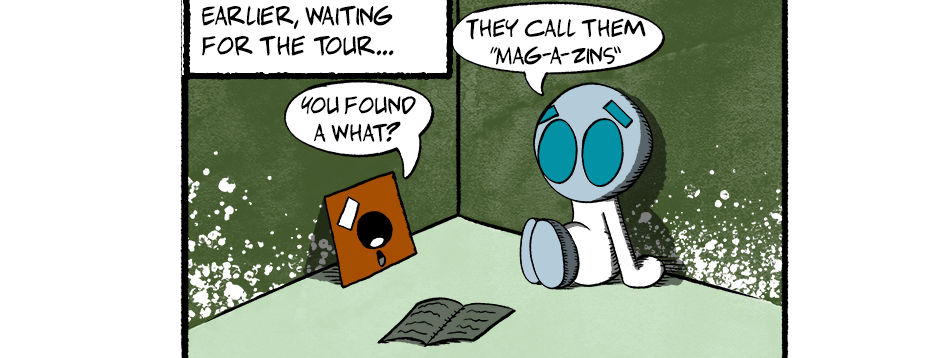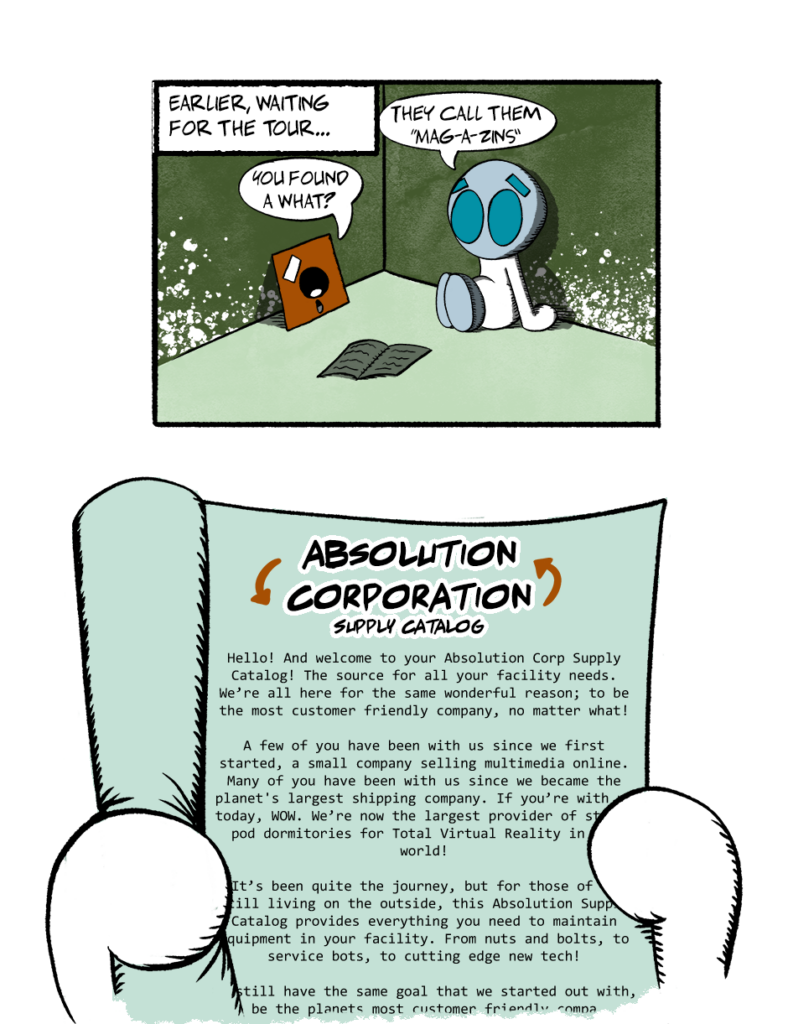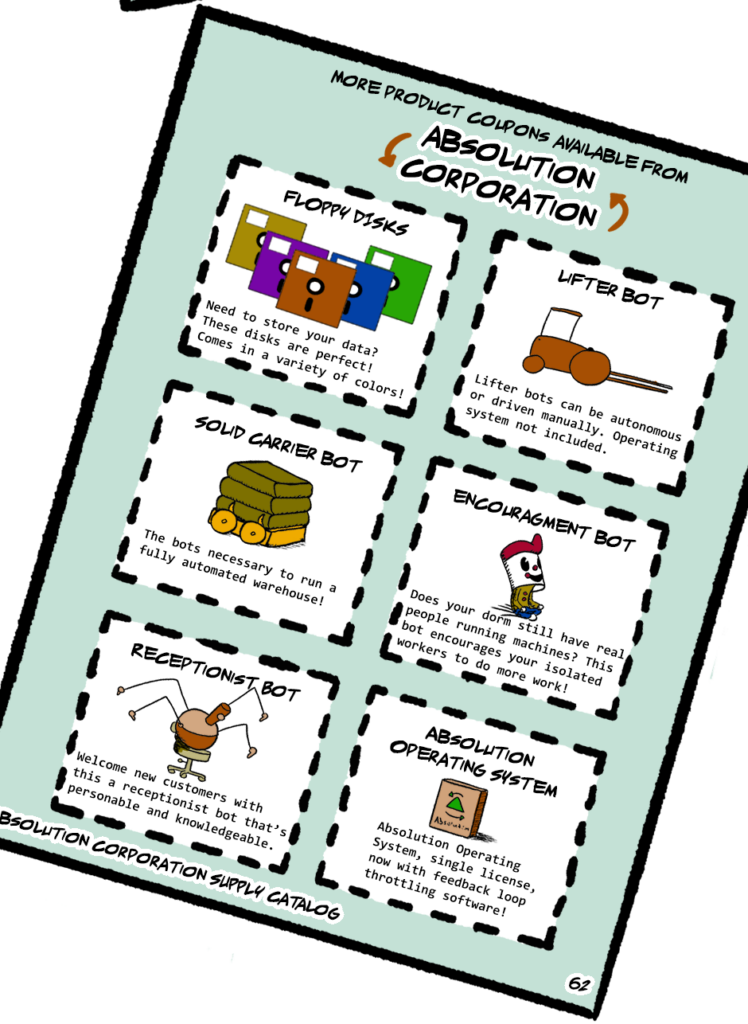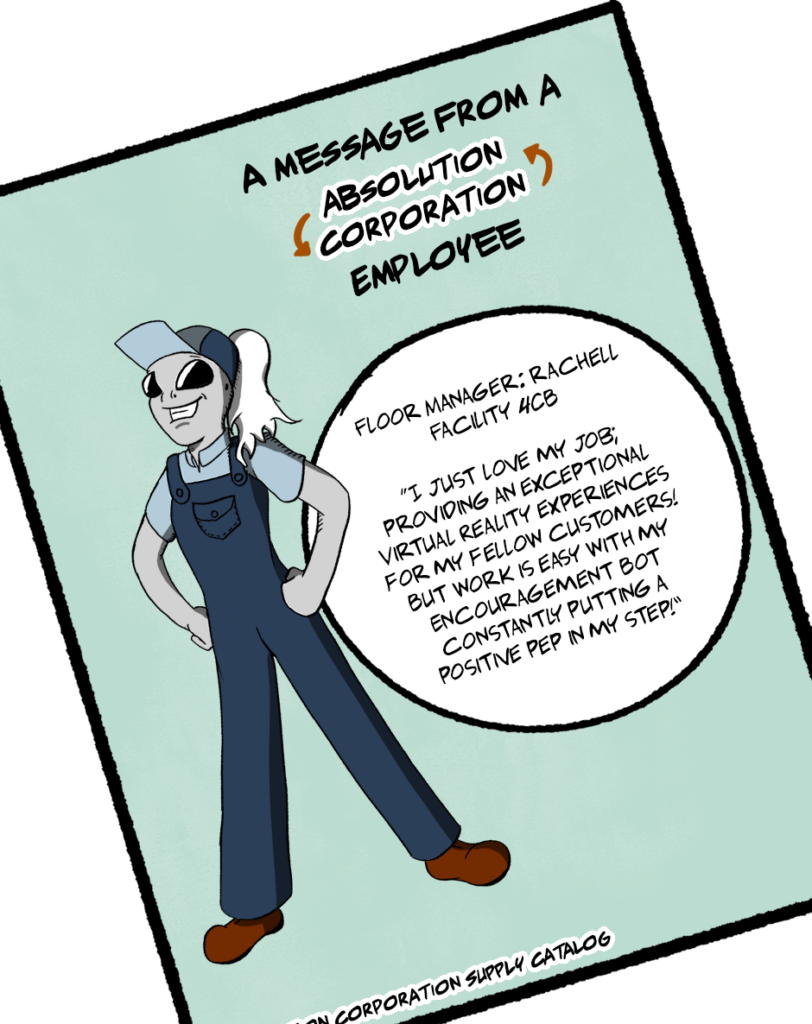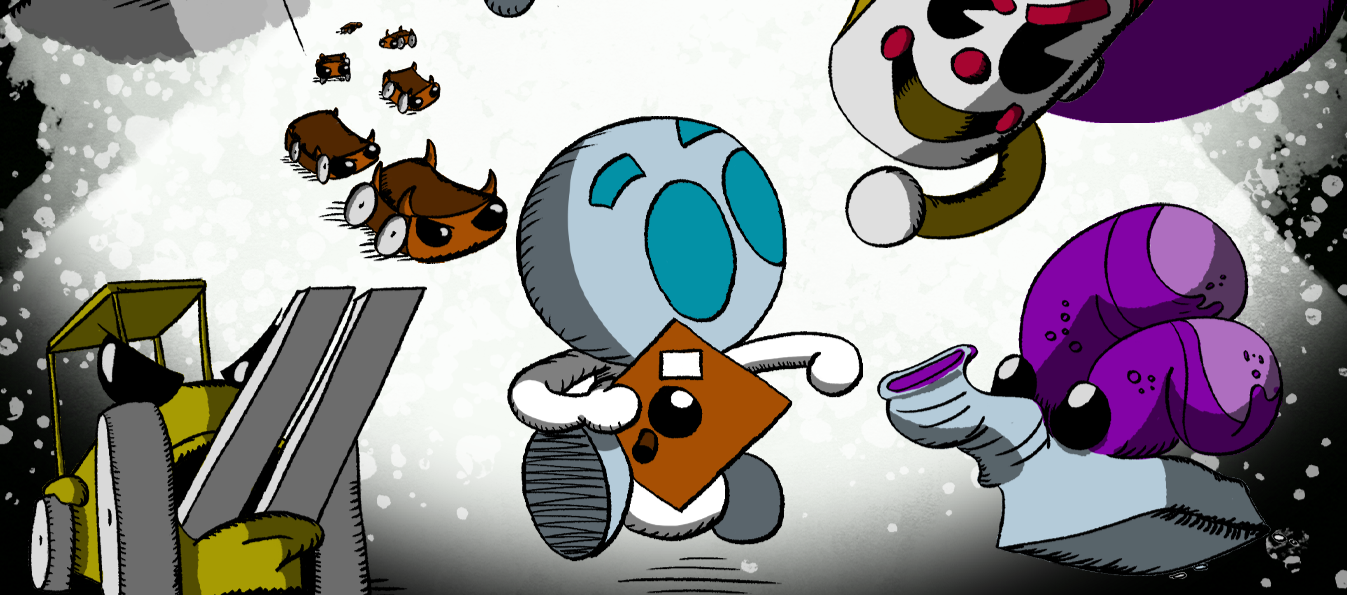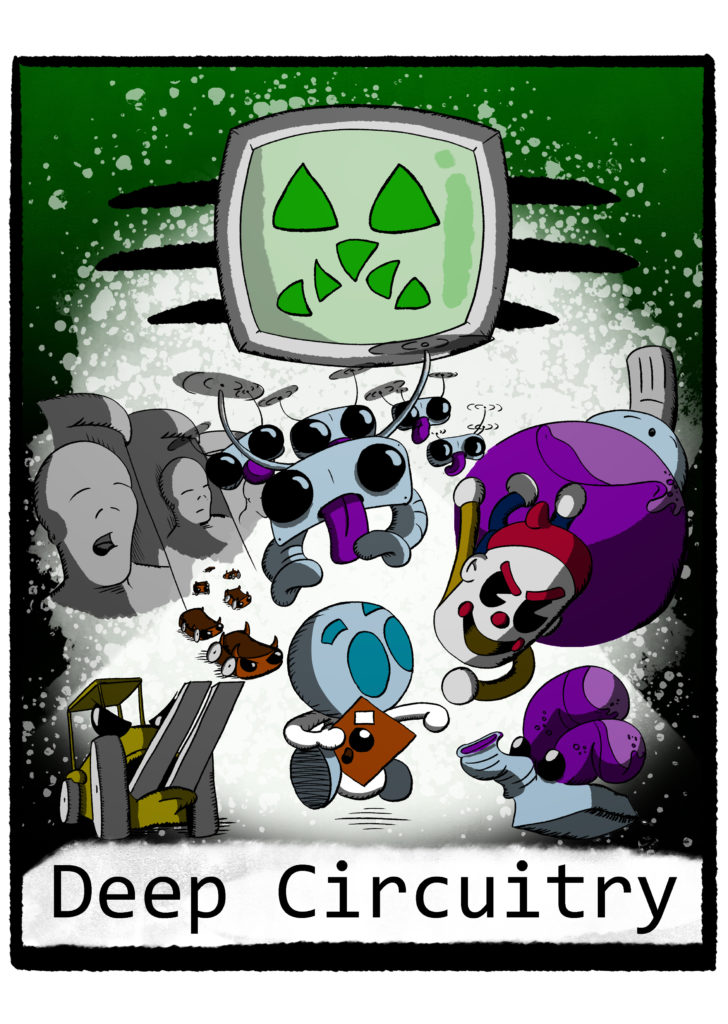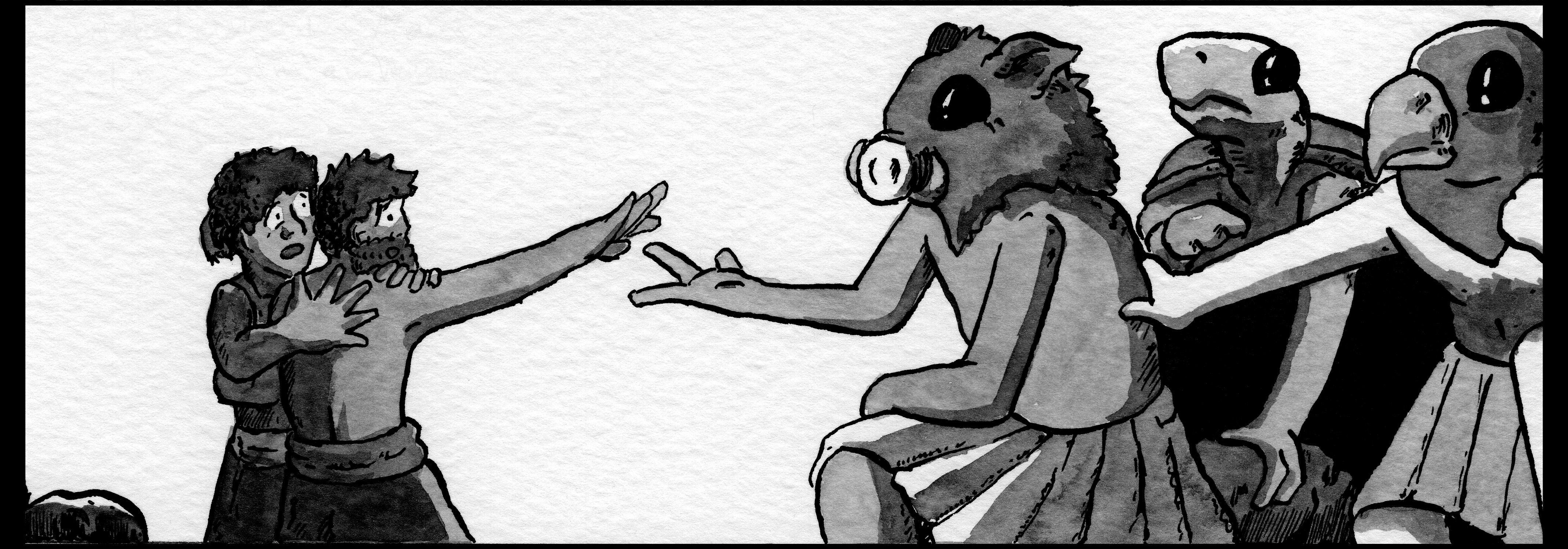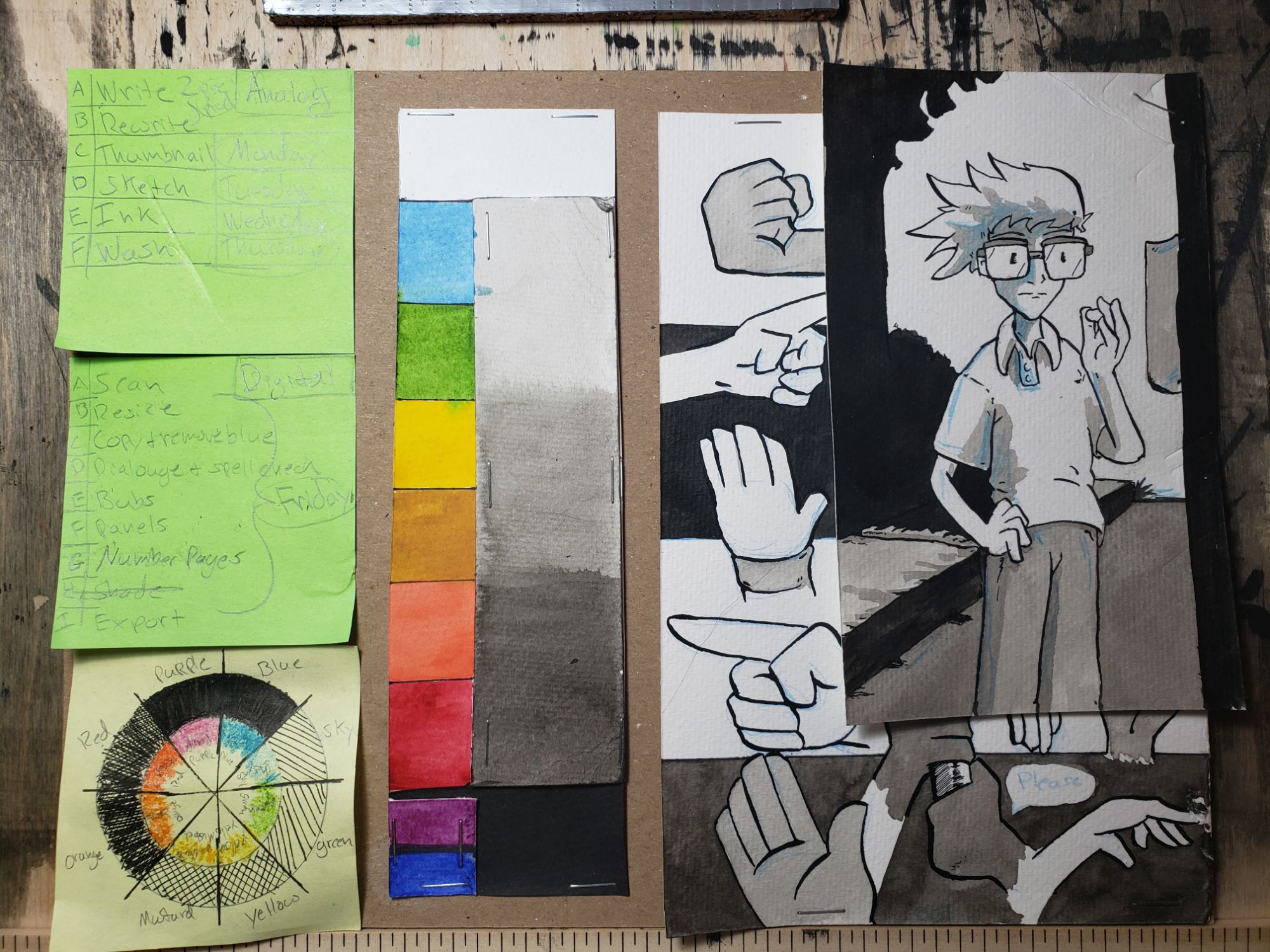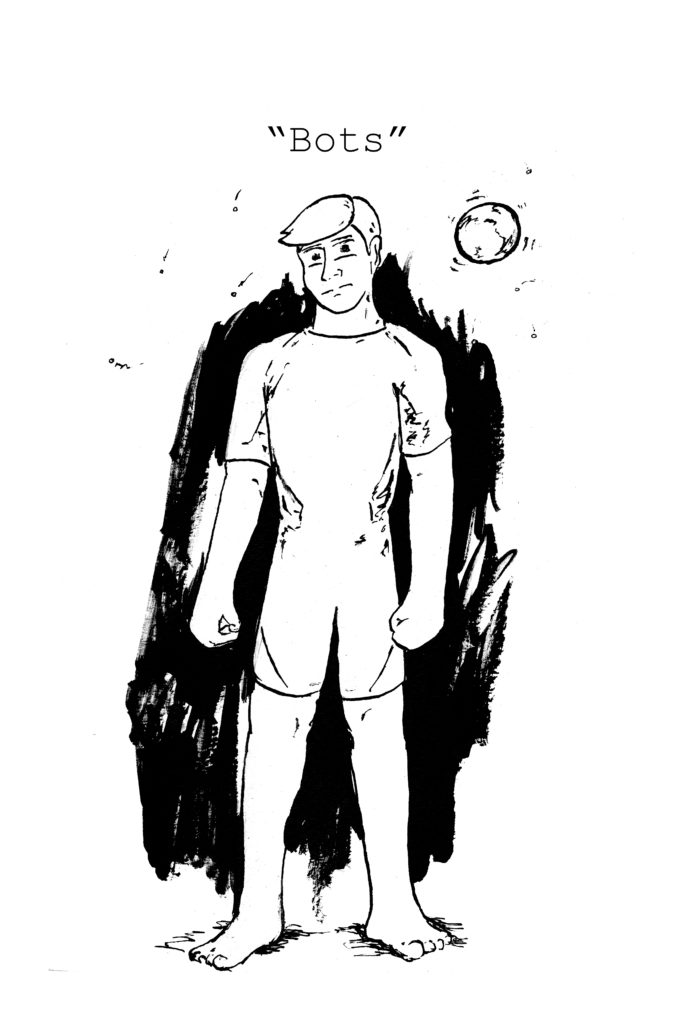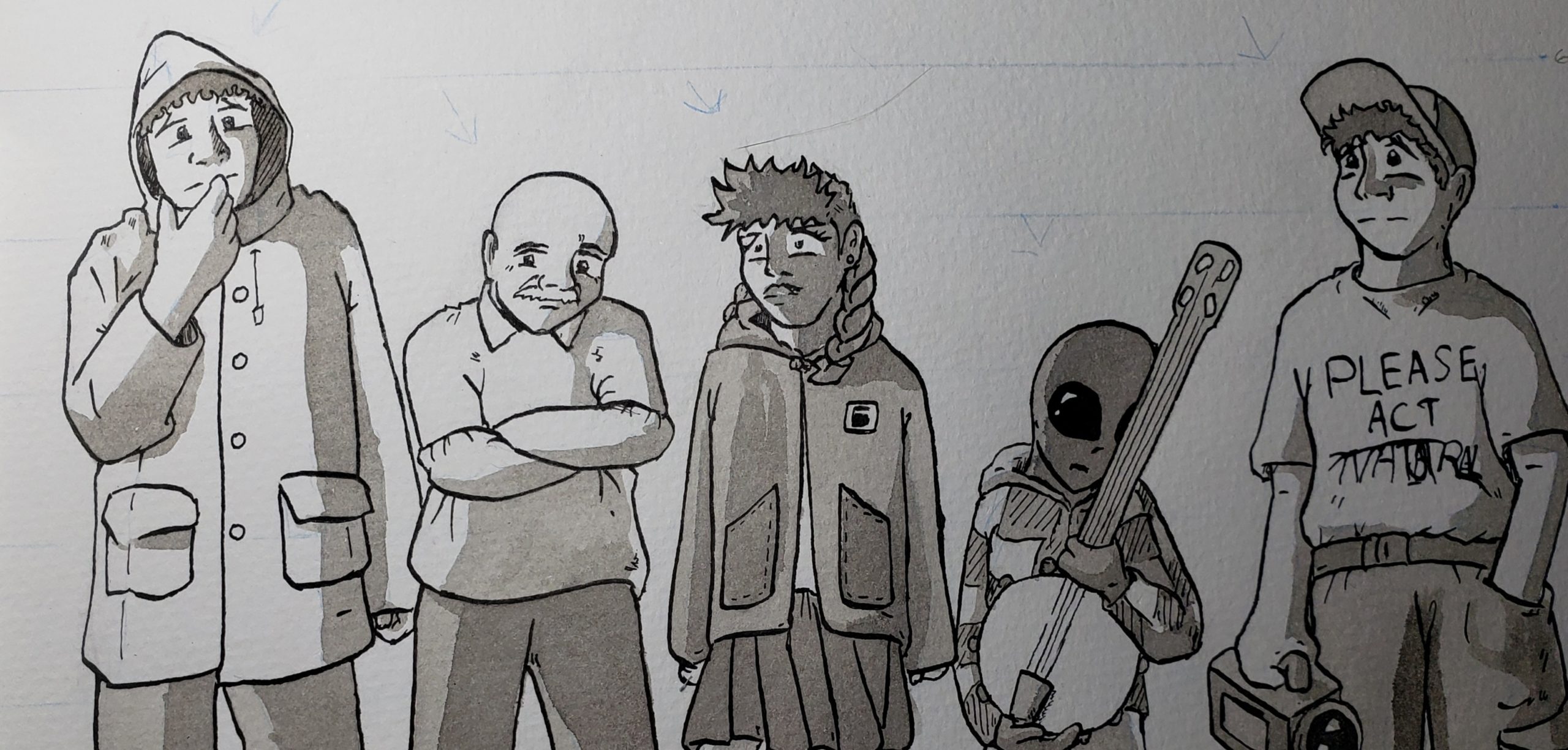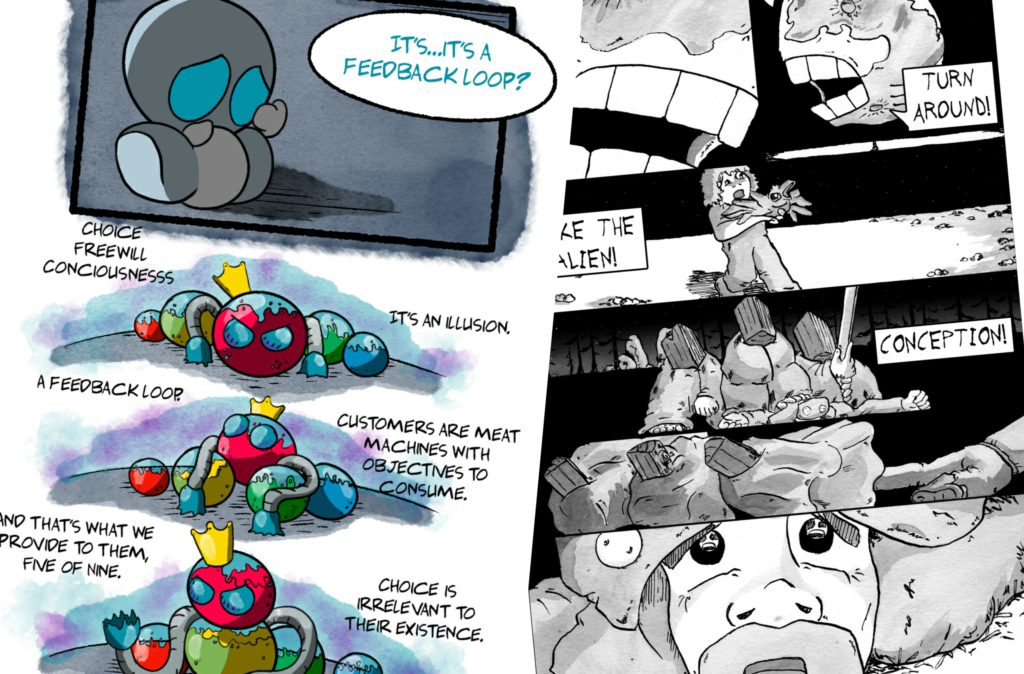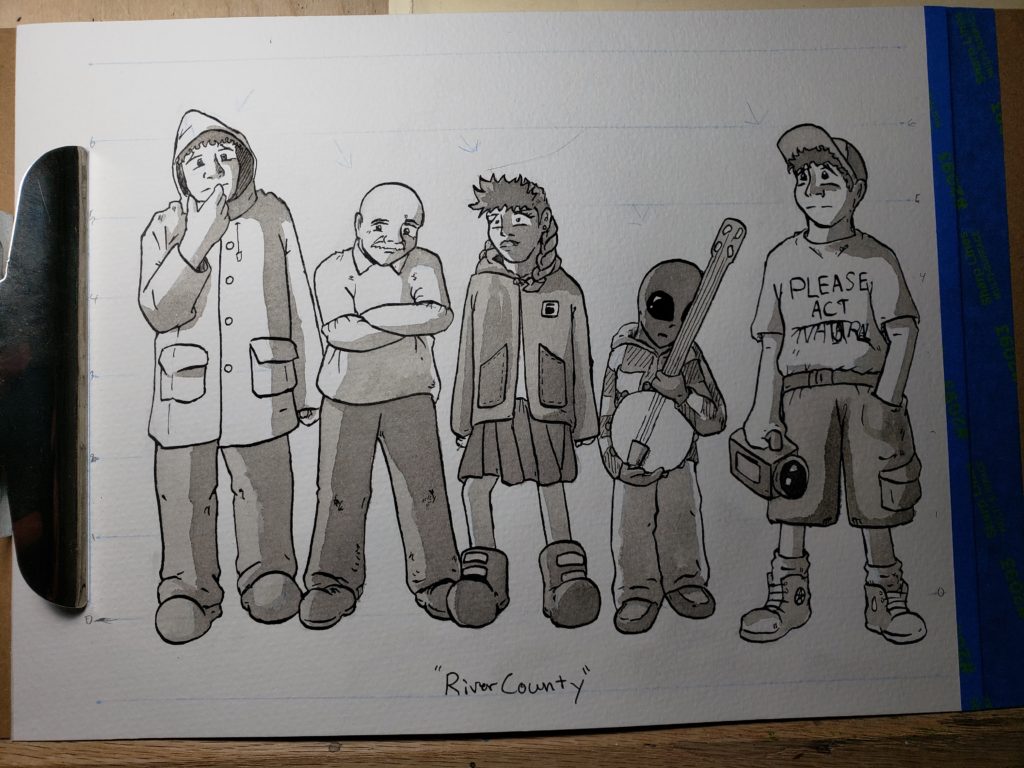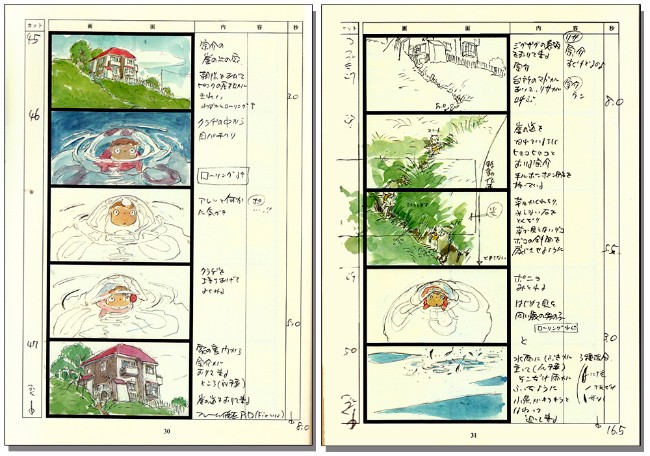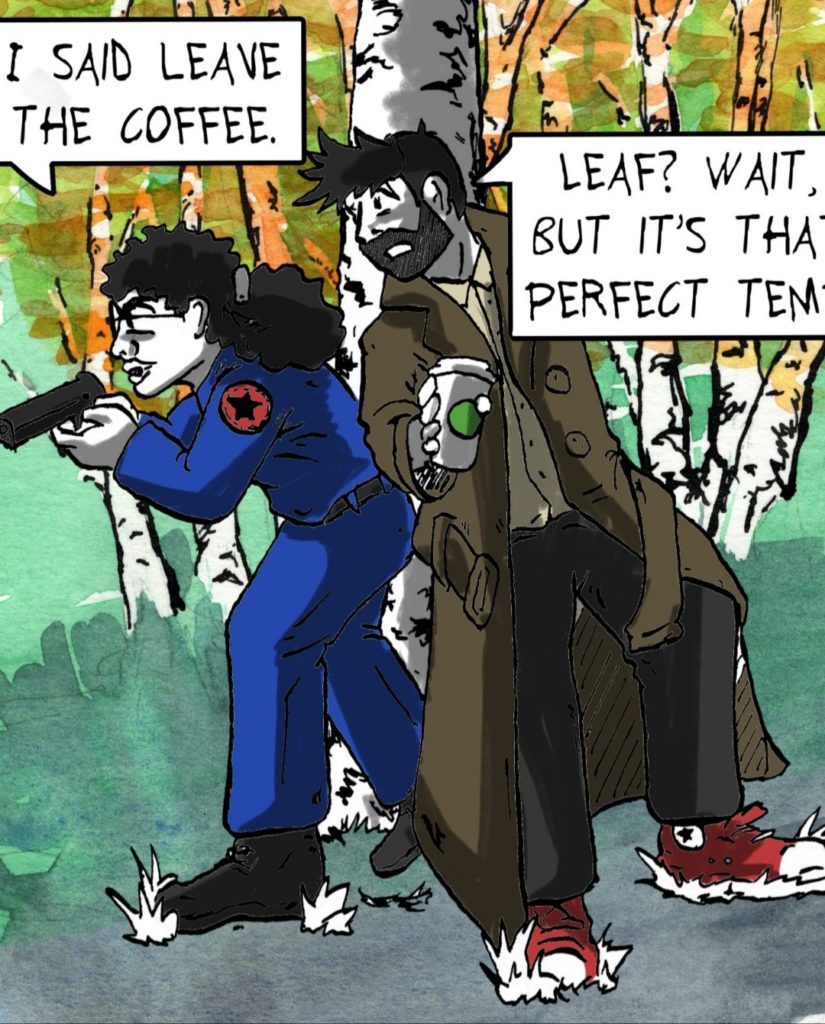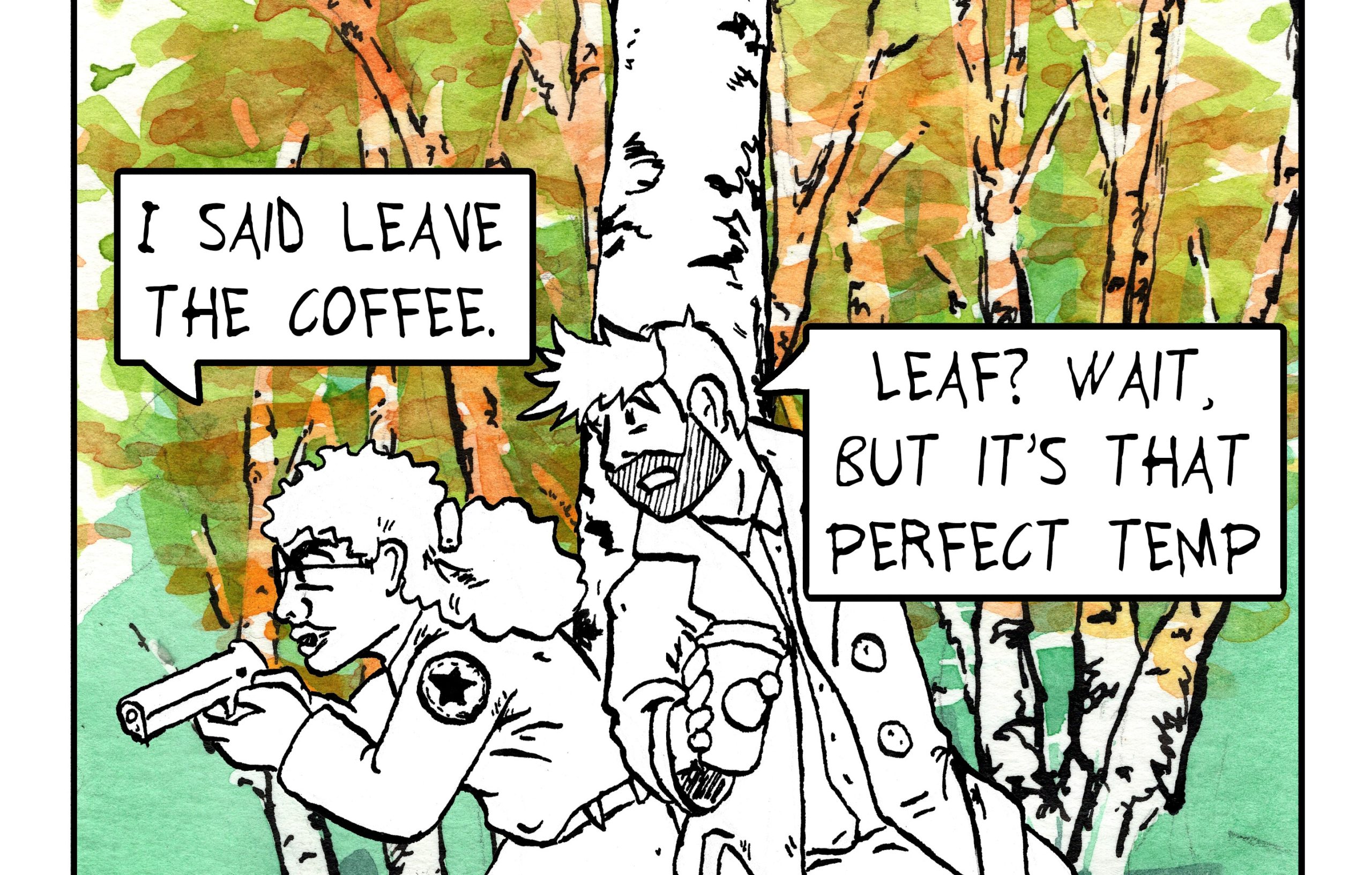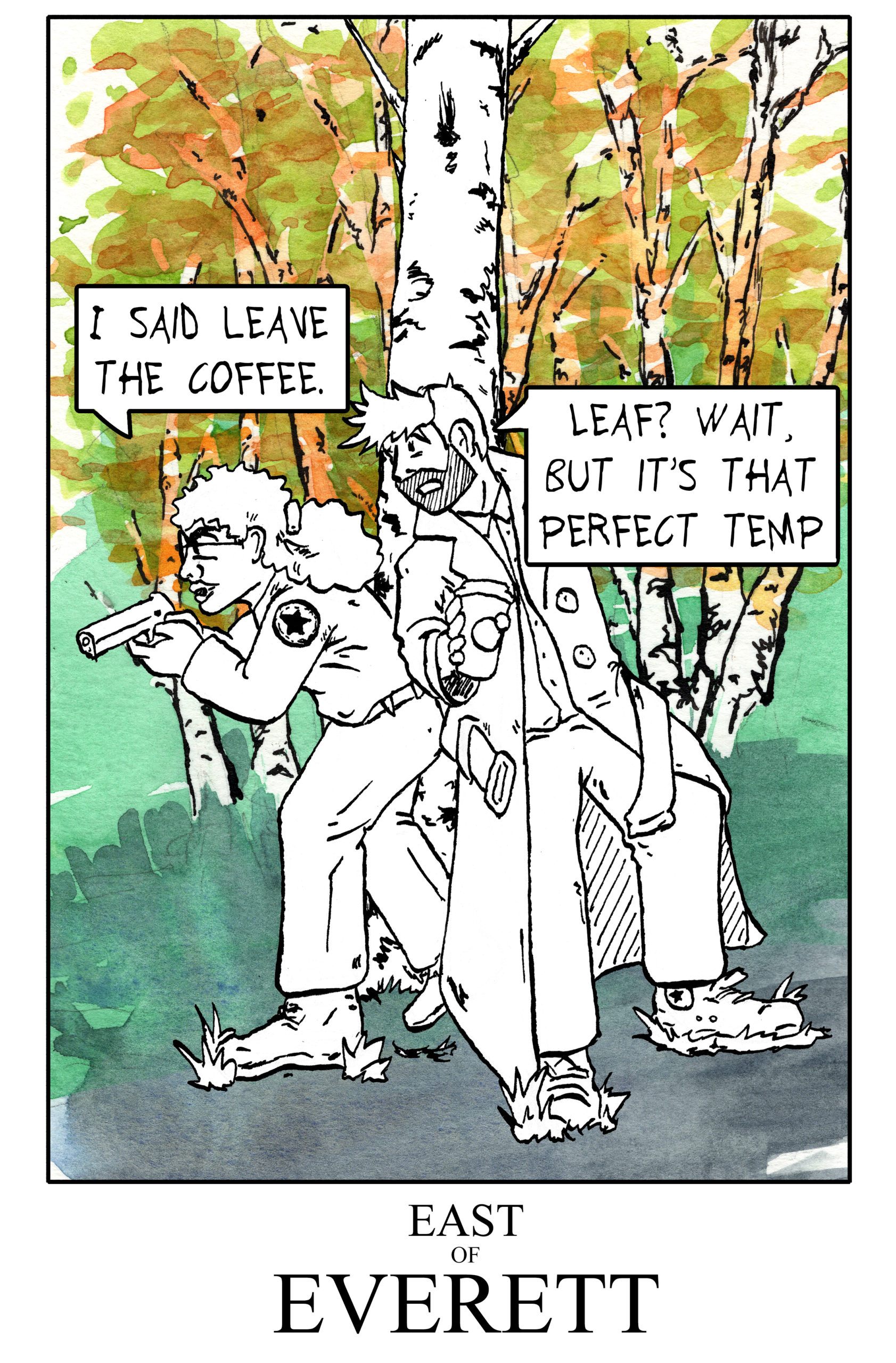So, I’m done illustrating Enter Cedar. There’s still an epilogue to sketch and ink, but I think I’ll wait to finish those 15ish pages before posting. So it might be a minute before I add new content to the comic on this website.
In the mean time, here’s a concept I’ve toyed around with, that I think applies to some of the “big picture movers” of the upcoming series. I call it “Humans, Elves and Buggers”. Or, the Imbibe version would be, “Beasts, Bots and Boos”.
Humans (or “Beasts”) are beings with finite lives. They must procreate to proceed forward in time and they must teach knowledge to subsequent generations. Titus Waiting is not entirely human, but he is a parasitic being who needs hosts to live. This, combined with his reliance on human culture to build his technology, makes him pretty human.
Elves (or “Bots”) have infinite life (think Lord of the Rings). While they still procreate, they don’t do it to further the species. However, elves still need to be taught knowledge. But because they live forever; once learned, forever kept. The KBR is an infinitely living robot who definitely has no urge to procreate, but continuously learns through this knowledge retention programing.
Buggers (or “Boos”) like humans, have finite lives and must procreate to continue their species through time (think Formic Queens from Ender’s Game). But because they have a hive mind and collective knowledge, they don’t teach or pass down knowledge, they just know everything. Cedarface is part of the spiritual hivemind. While his mothers may not procreate, Cedarface was made. It is quite possible that Cedarface’s golem nature may make him mortal. I haven’t figure that one out yet.
I’m not sure if these 3 characters perfectly resemble these 3 definitions. It could be argued that Cedarface, the KBR and Titus Waiting all have infinite live and don’t spend time procreating, which makes them all Bots, which makes the Imbibe Universe a story of Bots vs Beasts, with no Boos present. But it could be argued that Cedarface’s mothers are Boos, because while they live forever in human minds, they are ultimately reliant on the mortality of those human lives. Cedarface’s mothers must cultivate belief of themselves within humans to continue existing
